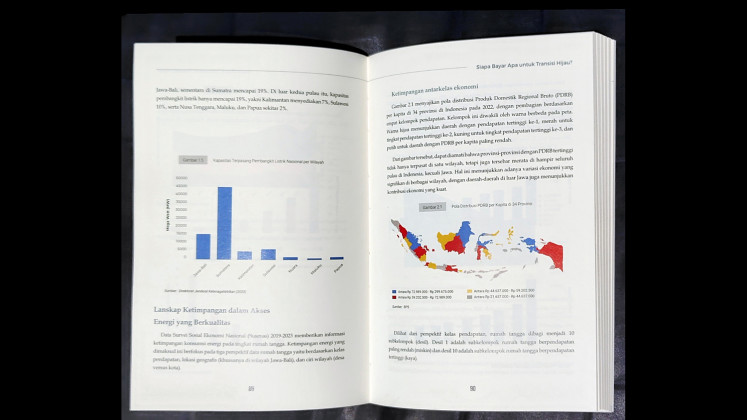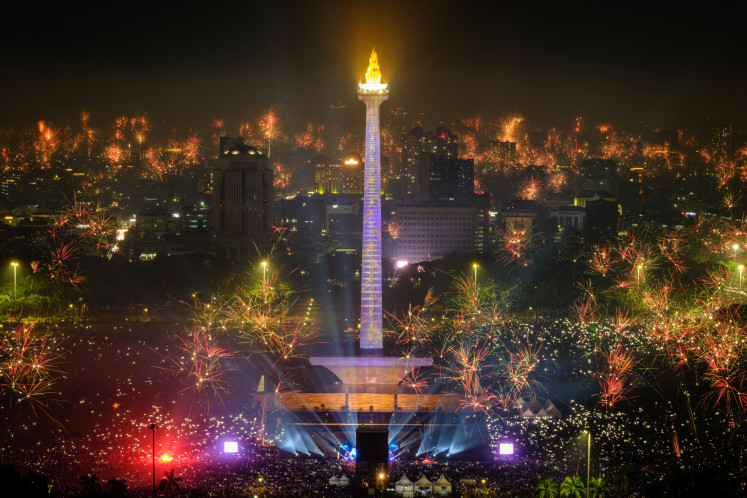Popular Reads
Top Results
Can't find what you're looking for?
View all search resultsPopular Reads
Top Results
Can't find what you're looking for?
View all search resultsMonet, Renoir and Cézzane: The colors of Impressionism
The influence of Impressionism can be seen in the many works of Southeast Asian artists.
Change text size
Gift Premium Articles
to Anyone
 Impressionist piece: Curator Paul Perrin (right) of the Musée d’Orsay offers his insight into Auguste Renoir’s Gabrielle à la Rose (Gabrielle with a Rose) on display at the National Gallery Singapore until March 11. (JP/Stevie Emilia)
Impressionist piece: Curator Paul Perrin (right) of the Musée d’Orsay offers his insight into Auguste Renoir’s Gabrielle à la Rose (Gabrielle with a Rose) on display at the National Gallery Singapore until March 11. (JP/Stevie Emilia)
A
revolutionary approach in capturing the effects of light, painting outdoors and using pure, lighter colors has transformed masterpieces into the works we know today while giving rise to one of the influential art movements – Impressionism.
In collaboration with one of the world’s leading modern art museums, the Musée d’Orsay in Paris, the National Gallery Singapore is displaying over 60 stunning masterpieces by the foremost innovators of Impressionism — the art movement closely identified with the emergence of the modern era.
Giving a nod to the Impressionists’ radical use of color, the displayed paintings are presented in thematic sections based on colors used by leading artists of Impressionism — from Édouard Manet, Claude Monet and Auguste Renoir to Paul Cézanne at different stages of their careers.
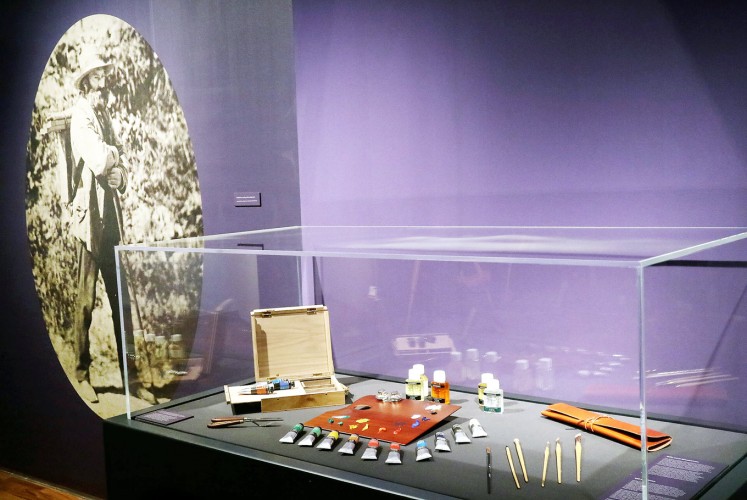
Curated by Marine Kisiel and Paul Perrin from the Musée d’Orsay, the exhibition — entitled “Colours of Impressionism: Masterpieces from the Musée d’Orsay” — runs until March 11.
“Impressionism is one of the most influential movements in the history of art, fascinating artists and art audiences around the world and across centuries,” Eugene Tan, the director of National Gallery Singapore, told invited members of the media, including The Jakarta Post, during the press viewing.
“In fact, the influence of Impressionism can be seen in the many works of Southeast Asian artists.”
Tan told the media the selection of works from the Musée d’Orsay’s collection provided art lovers with an accessible and visually powerful introduction to Impressionism and some of its defining themes and ideas.
“We hope visitors will enjoy this rare opportunity to get up close with these significant paintings and deepen their understanding between the art of Southeast Asia and the world.”
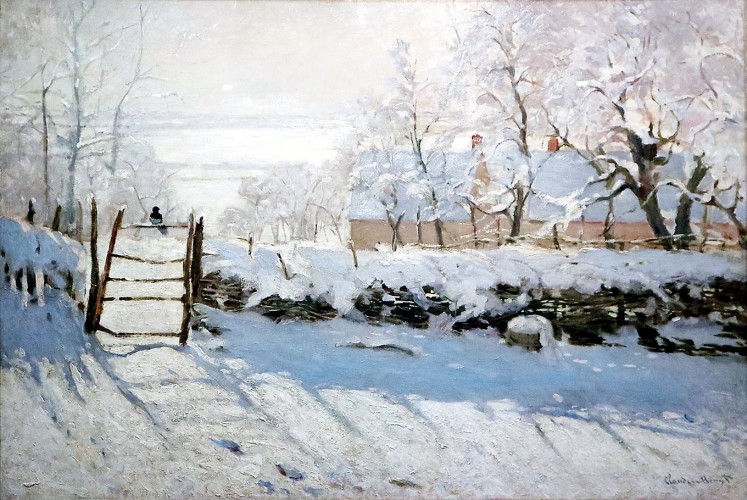
The art movement emerged when a group of young painters like Monet and Renoir began to challenge the status quo by taking a revolutionary approach to painting light and using color.
Inspired by the rapid technological innovations of the late 19th century, these Impressionists moved out of their studios to the open, capturing the fleeting effects of light as it appeared before their eyes — using newly available pigments and discoveries in the science and theory of color.
Without their revolutionary moves, Perrin said the only paintings recognized as masterpieces today may be the carefully composed and often theatrical paintings that characterized the neo-Classicism and Romanticism schools.
Starting out with the blacks used by painters in the 1850s and 1860s to represent realities of their time, the exhibition, for instance, looks into how Impressionists used white and blue tones to capture snowscapes and their shadows or lush greens and blues to depict the French landscape.
In the latter stage of the movement, soft pinks and purples were used to create new harmonies and more subjective realities.
At the exhibition, which is part of the Century of Light showcase of art from the 19th century, visitors can get up close with Le Bassin aux nymphéas, harmonie rose (Water lily Pond, Pink Harmony), a painting of one of Claude Monet’s favorite subjects — his pond with a Japanese-style bridge, filled with water lilies — which he painted repeatedly.
Other masterpieces include Auguste Renoir’s Gabrielle à la rose (Gabrielle with a Rose), which breathed new life into the great European tradition of the female nude; and Le berceau (The Cradle), arguably the most important work by the first lady of Impressionism, Berthe Morisot.
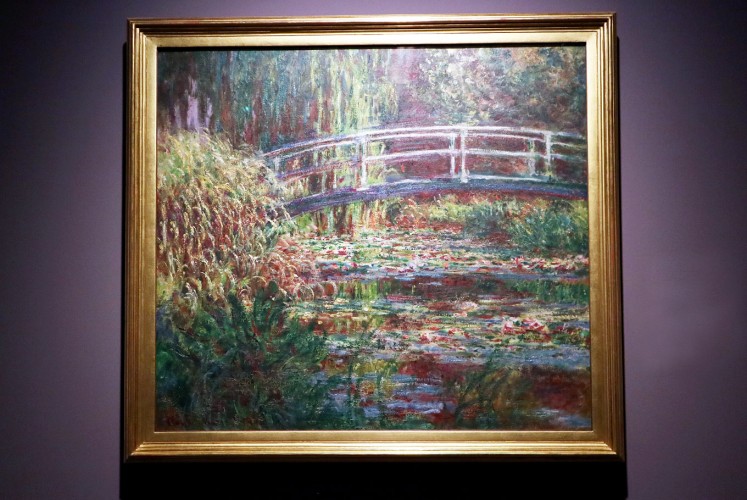
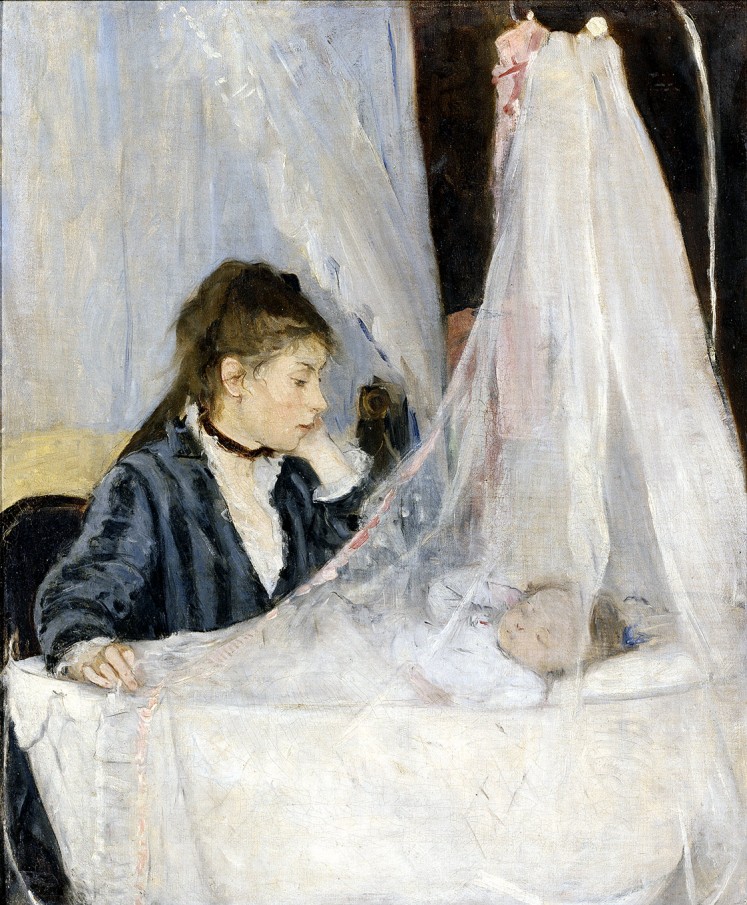
Beyond the artworks, the exhibition expounds further on the artists’ working methods through images of them at work along with a display of brushes, paints and palettes used by the artists, like Auguste Renoir and Edgar Degas, themselves.
The show also addresses the shift to neo-Impressionism, which is also better known as “Pointillism”, with works from key neo-Impressionist artists like Georges Seurat and Paul Signac.
The president of the Musée d’Orsay, Laurence des Cars, said the museum was delighted to partner with the gallery to showcase its treasures to Asian audiences. “We hope they will appreciate these beautiful and evocative paintings that were part of the first modern art movement in our history,” she added.





